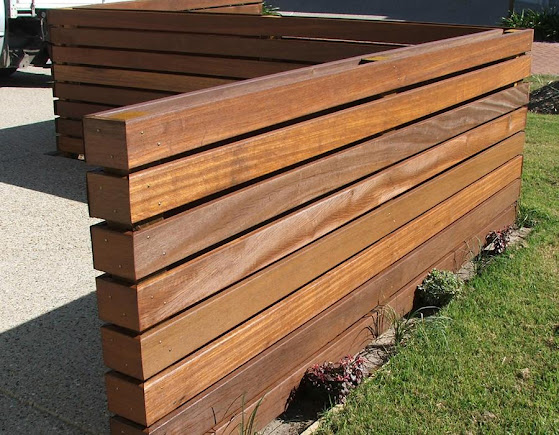Maintaining Your Outdoor Wood Fence: Essential Tips for Longevity
For many homeowners, a wooden fence is more than a property boundary; it's an integral part of the home's aesthetic, security, and privacy. However, natural elements and the passage of time can take their toll, necessitating regular maintenance to protect and preserve your investment. Timber fencing on the Sunshine Coast can take a bearing as the weather is often harsh on outdoor structures. If you live in the area, knowing how to care for your wood fence is critical, and so here's a guide that takes you through each step of maintaining your outdoor wood fence. From routine cleaning to termite prevention, we'll explain what's needed.
Regular Cleaning
Just like any aspect of your home, fences accumulate dust, debris, and sometimes even mould. Regular cleaning not only upholds the appearance of the wood but also prevents the growth of harmful organisms.
Step-by-step Scrubbing
Begin by using a stiff brush to gently scrub the wood, working from top to bottom.
A pressure washer can be used, with caution and at low pressure, to make the cleaning more effective. Too much pressure can damage the wood.
For tougher stains, mix detergent with warm water and scrub with a brush.
Rinse thoroughly with clean water.
Allow the fence to dry completely before moving on to the next maintenance step.
Inspect for Damage
Routine inspections can be the difference between small, manageable repairs and a costly re-fencing project.
Signs of Trouble to Look For
Warped or sagging boards may indicate water damage.
Cracks or splits in the wood are clear signs that the fence is vulnerable.
Loose nails or screws can compromise the stability of the structure.
Check for splinters or sharp edges that could be a safety hazard.
Repair Damage
Once any damage has been identified, prompt repairs are essential to prolong your fence's life and maintain its structural integrity.
Doing it Yourself
For minor damage, such as a single cracked board, it can often be more cost-efficient to replace just the affected section.
Use galvanised or stainless-steel fasteners to prevent rust and reduce the need for further repairs.
If the damage is extensive, it's time to call in professional help to assess the situation.
Seal or Stain the Wood
Sealing or staining your wood fence is like providing it with a protective shield against the elements.
Protective Coatings
Stains are ideal for bringing out the natural beauty of the wood while protecting it from UV rays.
Sealants form a protective barrier against moisture and help to prevent warping and cracking.
Apply coatings according to the manufacturer's instructions and make sure to do it on a dry day for best results.
Trim Vegetation
Growth from nearby plants can cause a host of problems for your outdoor wood fence, from creating moisture traps to pushing against the structure and causing bowing.
Vegetation Management
Regularly trim back any limbs or branches that hang over or touch the wood.
Keep vines and shrubs from growing up the fence.
If plants are creating a shade that doesn't allow the wood to dry, consider transplanting them to a new location.
Protect Against Water Damage
Wood and water do not mix well over time, so taking measures to protect your fence from the elements can greatly extend its lifespan.
Making Water Your Defender, Not Your Foe
Regularly check drainage systems to ensure they are diverting water away from the fence.
Apply water repellents to the wood to make it less absorbent.
Consider treating the bottom of your fence with extra repellents as it's the most susceptible to water damage.
Prevent Termite Infestation
Termites can turn a sturdy wood fence into Swiss cheese, so preventative measures are crucial.
Keeping Insects at Bay
Regularly inspect for termite tubes, or small piles of sawdust that could indicate their presence.
Use caution with mulch or decorative bark near the fence; these can harbour termites.
If you suspect termites, act swiftly. Professional exterminators can often save a fence if the problem is caught early.
Regular Maintenance Schedule
To avoid feeling overwhelmed by the thought of maintaining your fence, develop a regular schedule and stick to it.
Consistency is Key
Schedule inspections every few months, especially after severe weather.
Plan to clean the fence at least once a year, or more frequently if necessary.
Invest the time in making small repairs early to avoid more extensive work down the line.
Conclusion
Maintaining
a wood fence is a commitment, but the rewards are well worth the
effort. A fence that's regularly cleaned, repaired as needed, and
protected against the elements will not only last longer but will
enhance your home for years to come. Of course, too, don't forget the
importance of seeking assistance from Ironbark
Timber for the right choice of timber as well as professional
installation and maintenance tips.
Related Post:
What to Know Before Installing a New Timber Fence?




Comments
Post a Comment